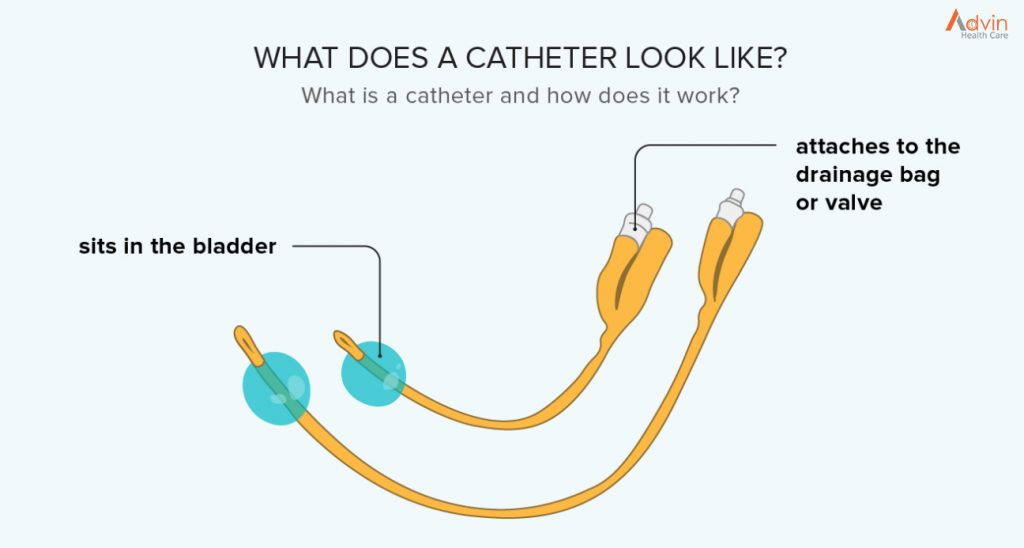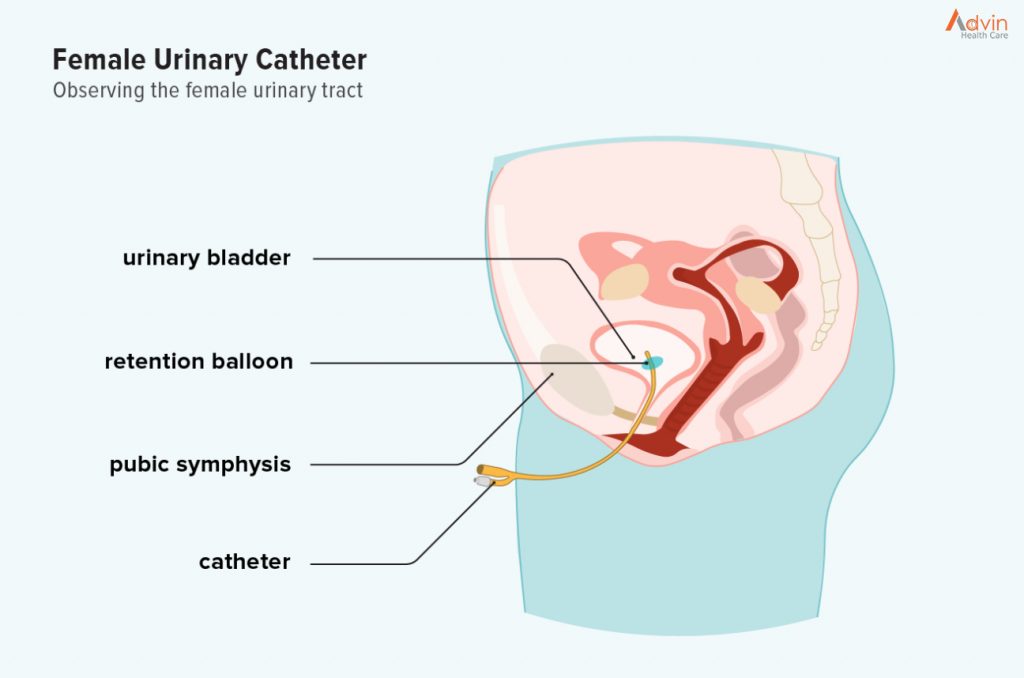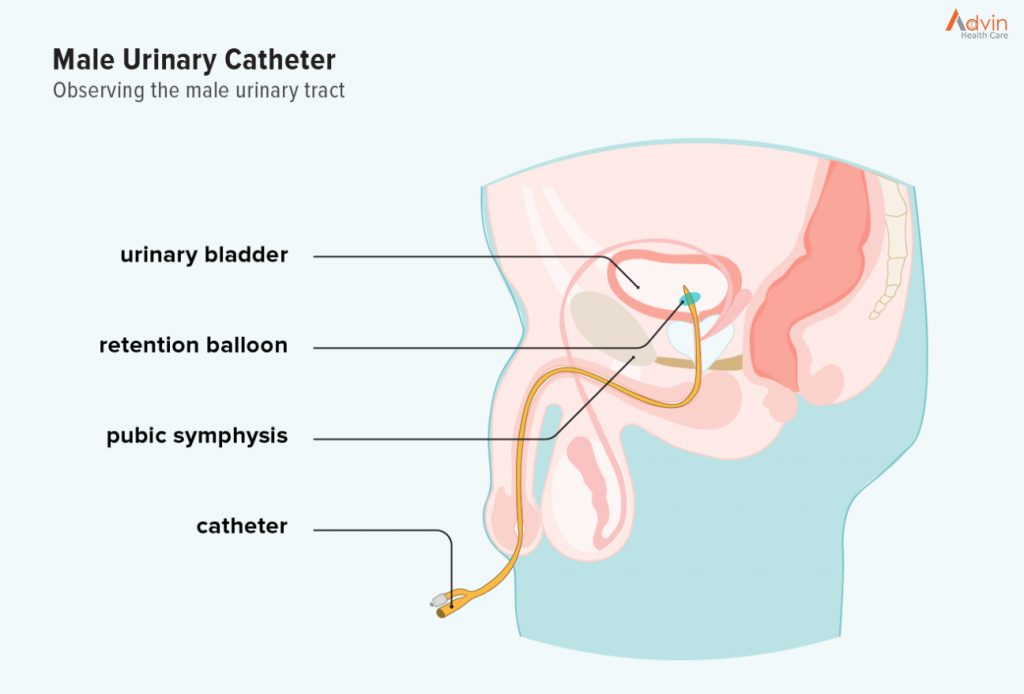What are urinary catheters?
A urinary catheter is a hollow, partially flexible tube that collects urine from the bladder and leads to a drainage bag. Urinary catheters come in many sizes and types.
They can be made of:
- rubber
- plastic (PVC)
- silicone

Catheters may be necessary in cases when you can’t empty your bladder. If the bladder isn’t emptied, urine can build up and lead to pressure in the kidneys. The pressure can lead to kidney failure, which can be dangerous and result in permanent damage to the kidneys.

Most catheters are necessary until you regain the ability to urinate on your own, which is usually a short period of time. Older adults and those with a permanent injury or severe illness may need to use urinary catheters for a much longer time or permanently.
Why are urinary catheters used?
A doctor may recommend a catheter if you:
- can’t control when you urinate
- have urinary incontinence
- have urinary retention
The reasons why you may not be able to urinate on your own can include:
blocked urine flow due to:
- bladder or kidney stones
- blood clots in the urine
- severe enlargement of the prostate gland
Other Reasons:
- surgery on your prostate gland
- surgery in the genital area, such as a hip fracture repair or hysterectomy
- injury to the nerves of the bladder
- spinal cord injury
- a condition that impairs your mental function, such as dementia
- medications that impair the ability of your bladder muscles to squeeze, which causes urine to remain stuck in your bladder
What are the types of urinary catheters?
There are three main types of catheters:
- indwelling catheters
- external catheters
- short-term catheters
Indwelling catheters (urethral or suprapubic catheters)
An indwelling catheter is a catheter that sits in the bladder. It may also be known as a Foley catheter. This type can be useful for short and long periods of time.
A nurse usually inserts an indwelling catheter into the bladder through the urethra. Sometimes, they will instead insert the catheter into the bladder through a tiny hole in the abdomen. This type of indwelling catheter is known as a suprapubic catheter.
A tiny balloon at the end of the catheter is inflated with water to prevent the tube from sliding out of the body. The balloon can then deflate when the catheter needs to be removed.
External catheters
A condom catheter is a catheter placed outside the body. It’s typically necessary for people with a penis who don’t have urinary retention problems but have serious functional or mental disabilities, such as dementia.
A device that looks like a condom covers the penis head. Then, a tube leads from the condom device to a drainage bag.
These catheters are generally more comfortable and carry a lower risk of infection than indwelling catheters. Condom catheters usually need to be changed daily, but some brands are designed for longer use. These can cause less skin irritation than condom catheters that require daily removal and reapplication.
A wound, ostomy, and continence nurse (WOCN) can help make these recommendations.
Short-term catheters (intermittent catheters)
In some cases, you may only need a catheter for a short period of time after surgery until the bladder empties. After the bladder empties, it’s necessary to remove the short-term catheter. Healthcare professionals refer to this as an in-and-out catheter.
In a home setting, people are trained to apply the catheter themselves or with the help of a caregiver. It can be done through the urethra or through a hole created in the lower abdomen for catheterization.
What are the potential complications of urinary catheters?

Urinary catheters are the leading cause of healthcare-associated urinary tract infections (UTIs). Therefore, it’s important to routinely clean catheters to prevent infections.
The symptoms of a UTI may include:
- fever
- chills
- headache
- cloudy urine due to pus
- burning of the urethra or genital area
- leaking of urine out of the catheter
- blood in the urine
- foul-smelling urine
- low back pain and achiness
Other complications from using a urinary catheter include:
- allergic reaction to the material used in the catheter, such as latex
- bladder stones
- blood in the urine
- injury to the urethra
- kidney damage (with long-term indwelling catheters)
- septicemia, or infection of the urinary tract, kidneys, or blood
How do you care for a urinary catheter?
One-time use catheters and reusable catheters are available. For reusable catheters, be sure to clean both the catheter and the area where it enters the body with soap and water to reduce the risk of a UTI. One-time use catheters come in sterile packaging, so only your body needs cleaning before inserting the catheter.
You should also drink plenty of water to keep your urine clear or only slightly yellow. This will help prevent infection.
Empty the drainage bag used to collect the urine at least every 8 hours and whenever the bag is full. Use a plastic squirt bottle containing a mixture of vinegar and water or bleach and water to clean the drainage bag. Read more on clean intermittent self-catheterization.
Urinary catheter side effects
While UTIs are the most common side effects associated with urinary catheters, there are other potential side effects that you may discuss with your doctor. These include:
- bladder spasms and pain, which may feel like stomach cramps
- blood or other debris getting trapped inside the catheter tube, which may stem from blockage in the catheter’s drainage system
- catheter leakage, which may happen from a blockage in the system, or from pushing during toileting if you’re constipated
- urethra or bladder injuries (less common)
- bladder stones (less common, but may be more likely after long-term catheter use)
Risk factors
While not all side effects from urinary catheter use are completely avoidable, you may help reduce your risk with certain dietary and hygiene steps, as well as preventing blockages in the catheter’s drainage system.
Discuss the following risk factors with your doctor:
- Not getting enough fluids. This could lead to dehydration and subsequent UTI. Pale urine indicates that you’re getting enough water.
- Lack of fiber in your diet. Eating enough high fiber foods, such as vegetables, grains, and fruits, can keep your bowel movements regular and prevent constipation-induced catheter leakage.
- Catheter disorganization. Any twists or bends in the catheter, as well as urine bag displacement, may also lead to blocks or leaks.
- Problems keeping your skin or the equipment clean. You may consider asking for help from a caregiver to make sure all items are cleaned regularly, if you’re unable to do so on your own.



